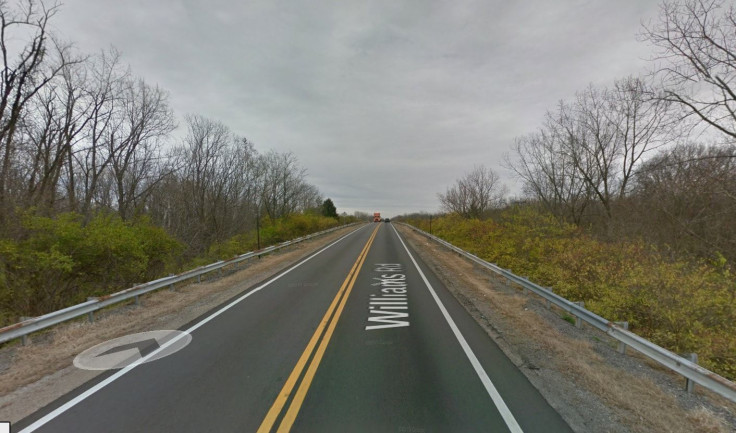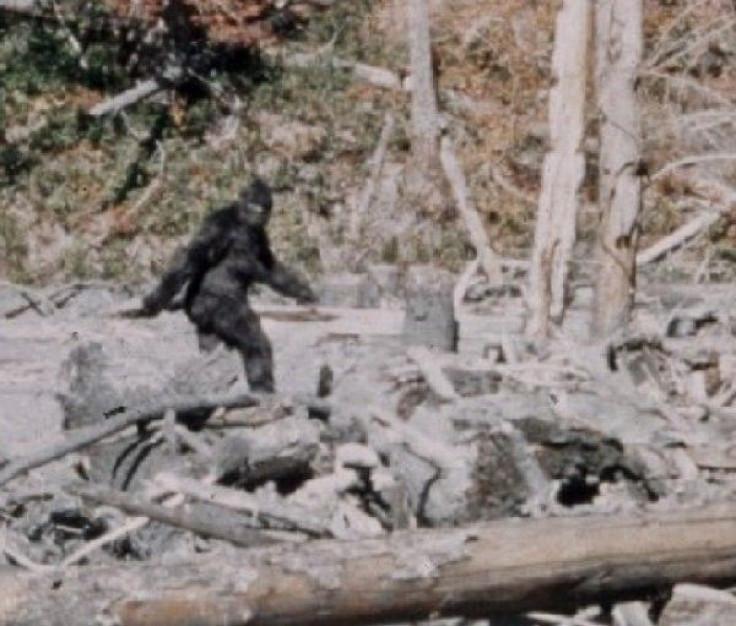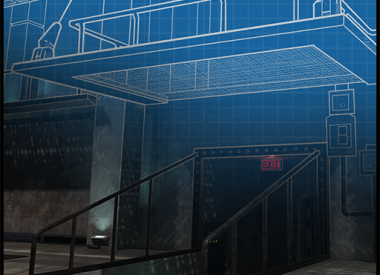Roger Patterson and Bob Gimlin captured 954 film frames of a female sasquatch crossing a dry creek bed in 1967. Their famous Patterson-Gimlin film was shot deep in the woods of northern California, alongside Humboldt County’s Bluff Creek, 25 miles from the nearest town and accessible only by logging roads. But what happens when bigfoot, perhaps pushed out of their comfort zone by human encroachment and habitat destruction, shows up in our urban areas?
Any rundown of the most convincing bigfoot sightings (a woefully unconvincing collection) are catalogs of wilderness adventure, starring people far from civilization experiencing a creature that’s alien in its humanness. It’s no coincidence that the famous sightings are those far from civilization, since their remoteness takes on its own shade of evidence, arguing against the simplest explanation: a misidentified person or human hoaxer.
But they aren’t necessarily the average encounter. The Bigfoot Field Researchers Organization (or BFRO) has been collecting bigfoot sightings since 1995, but their database of sightings, archived state-by-state and county-by-county, contain sightings going back decades earlier. Searching through their archives for sightings in the United States’ top 20 urban areas reveals a surprising wealth of encounters.
They’ve been seen along Miami and Orlando highways. “A tall hairy figure with a pointed head” was reported watching a couple as they cleaned a trailer park just outside San Antonio. A mysterious ape dogged a hiker just outside of Los Angeles, part of a sightings trend that had some cryptozoologists speculating that bigfoot migratory patterns take them just north of the second largest population center in the country. Two people saw “something large and greyish” that “scared the crapt [sic] out of us” as they drove past a Phoenix Budweiser factory. In Auburn, Washington, located between Seattle and Tacoma, nursing home employees claim to have witnessed a bigfoot digging through a dumpster. Bigfoot might even be squatting in abandoned Detroit properties.
Multiple soldiers on training exercises around Camp Pendleton, just north of San Diego, have reported apes in the hills. Following several late 60’s sightings, a San Diego Sheriff’s Sergeant described pulling over a prominent local psychiatrist, who kept a .44 Magnum on his passenger seat in case he ran into the three “zoobies” — 7-foot-tall, upright apes — that had been stalking his family, even imitating their human voices.
The Chicago suburbs are, by eyewitness account, surprisingly infested with bigfoot or similar creatures. Footprints were reported in Bedford Park, while an ape with a “tan reddish hue” and “wedge-shaped head” made chimpanzee noises in Glenwood. In 1974, a man saw an 8-foot, “blackish-brown” ape playing peekaboo in the headlights of his car outside of Chicago. “We thought it was a werewolf, because we were kids,” he later reported.
There have even been bigfoot sightings in New York City, bringing the cryptid in proximity to 8.5 million people. A rash of sightings was recorded on Staten Island in the 70s, the creature responsible has since been dubbed “Trashquatch.” More recently, a Fort Greene videographer claimed to have caught a bigfoot on video, in Brooklyn’s 585-acre Prospect Park. The footage isn’t likely to convince anyone.
Contrast these accumulated urban anecdotes with the typical deepwoods bigfoot sighting and it conjures a deeply strange animal, at once ubiquitous and vaporous. But strangely enough, this confused portrait of bigfoot may be more the norm than the wild, inhospital no-man’s-lands the creature is typically imagined to inhabit (likely thanks to backwoods Bigfoot horror movies like The Legend of Boggy Creek, Abominable and Willow Creek).
Pierce County in the state of Washington stretches from Tacoma on the shoreline of the Puget Sound out east to Mt. Rainier National Park, capturing inside its border low-lying urban coasts, alpine cordillera and Rainier itself, an immense stratovolcano whose explosive potential may one day endanger the Seattle metropolitan area — just 54 miles to the northwest — and its nearly 4 million residents. Pierce County enfolds a highly trafficked port, urban sprawl and a narrow band of farms separating civilization from some of our country’s most primal ruggedness. This landscape — with cities, homes and businesses pressing against the Cascade Mountain Range — is topographically and ecologically suited for encounters between us and nature’s hidden secrets. Accordingly, Pierce County has more bigfoot sightings than any other county in the United States. The BFRO lists 75 sightings in Pierce County, stretching back to 1970. Bigfoot is seen most where humanity resides, but rules only incompletely.
In pursuit of their goal, “to resolve the mystery surrounding the bigfoot phenomenon” and “derive conclusive documentation of the species’ existence,” the BFRO has reached a handful of conclusions about the nature of the mysterious species they believe populates North American forests:
“These large apes are spotted mostly in forested regions with abundant protein sources. Deer in particular. They consistently maintain low population levels in those areas, even where the protein sources could support dramatically larger numbers of them. Consequently, they have never become an ongoing nuisance to human communities, or to human livestock. Unlike gorillas and chimps, their family/groupings are small and mobile, making it very difficult for modern humans to hunt them. Their impact on the land is so subtle that it takes a trained eye to even notice it. They can operate nocturnally, sometimes close to rural communities of humans, and be only occasionally seen, heard, or detected.”
Is this a profile of an animal or a description of its absence? Here bigfoot is defined by the same characteristics that lead most people to conclude bigfoot doesn’t exist: low population density and lack of “impact on the land.” Where are the bodies? Why would they be even more obscure than mountain gorillas? By BFRO’s reckoning, those weaknesses in the evidence become positive attributes, inverting a dearth of facts into evidence of categorical characteristics.
All of this makes a little more sense if bigfoot sightings were limited to far-flung locations. This may explain the durability of our collective bigfoot portrait as a wild creature, rather than a surprisingly suburban one — a backcountry bigfoot doesn’t dissolve into absurdity the instant we summon its image, like his big city cousin.
A handful of sightings from around my hometown of Columbus, Ohio dramatizes this exact dissonance. In 1997 a woman saw a reddish-brown something with a “very large and hairy” head, “twice as big as bear head.” It stepped over a guardrail and disappeared into the woods. The sighting garnered local news coverage. Here’s about where it happened:

It looks remote, but is only a couple hundred yards from very typical Ohio suburbia. The nearest intersection has a BP and a Family Dollar. Her’s is not the only sighting in the area. Years earlier, in 1987, someone saw bubbles rise in the middle of a local lake, “almost like a giant coffee pot percolating.” Soon, a mere ten feet away, “a huge white ‘thing,’” six feet tall and 300 pounds, burst out of the water, walked up the bank and disappeared into the woods.
As scenic as Columbus area metro parks may be, it strains the mind imagining a giant species of ape navigating the narrow strips of woods in between municipal dumps, farm fields, strip malls and cookie-cutter suburban streets. In blustery Ohio winters, when the leaves are gone, you can see through most patches of woods straight through to the other side, reducing wilderness to narrow strips of untamed divider between backyards.
In May, The New York Times Magazine ran a piece titled “Why Close Encounters With Animals Soothe Us.” Maybe bigfoot plays a similar function in our collective psychology, as one of the few enduring symbols of uniquely American wildernesses. Sasquatch is an enduring promise of mysteries that still remain and unexplored frontiers. But the totality of bigfoot evidence presents a sprawl of eyewitness testimony that refuses to square neatly with the symbolic box in which sasquatch flourishes. While stories of bears infiltrating suburban neighborhoods and the soaring urban coyote population (they’re taking over Chicago!) delight us, everything changes when bigfoot comes to the big city — the poor creature tends to evaporate.


















